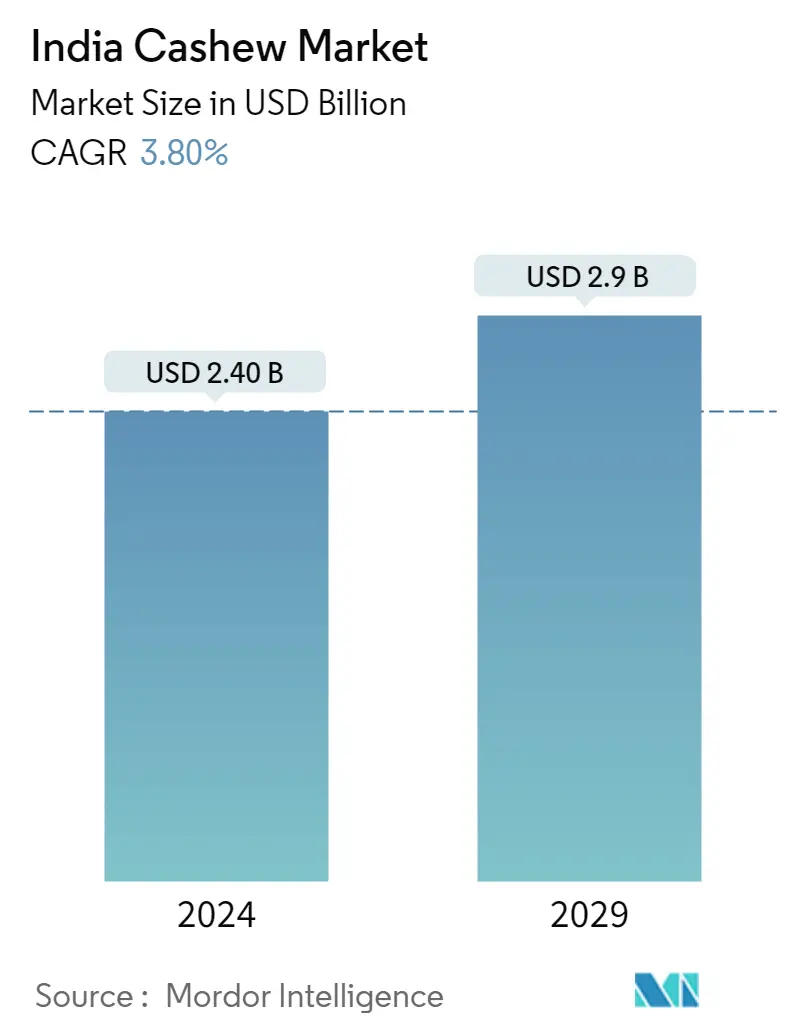Market Size of India Cashew Industry

| Study Period | 2017-2027 |
| Base Year For Estimation | 2021 |
| Forecast Data Period | 2023 - 2028 |
| Market Size (2023) | USD 2.31 Billion |
| Market Size (2028) | USD 2.79 Billion |
| CAGR (2023 - 2028) | 3.80 % |
Need a report that reflects how COVID-19 has impacted this market and its growth?
Cashew Market Analysis
The India Cashew Market size is expected to grow from USD 2.31 billion in 2023 to USD 2.79 billion by 2028, at a CAGR of 3.80% during the forecast period (2023-2028).
- India is among the major cashew-producing countries globally. According to India Brand Equity Foundation (IBEF), in 2022, the cashew industry has much economic significance as it employs more than 10 lakh people on farms and factories in rural areas. The cultivation of cashew in India covers a total of 0.7 million hectares of land, and the country produces over 0.8 million tonnes (MT) annually.
- In recent years, the cashew market has seen a rapid shift in the consumption pattern across India, primarily owing to flavored assorted cashew products occupying an increased share in the retail market space. In India, cashew is grown in the peninsular areas of Kerala, Karnataka, Goa and Maharashtra, Tamil Nadu, Andhra Pradesh, Orissa, and West Bengal. Among these, Kerala is the largest producing state.
- With increasing health consciousness, consumers are choosing to snack healthy, owing to which the demand for flavored cashews is rising in India. In India, cashew nuts are available as roasted, salted, flavored, and coated with spices, honey, etc. Value-added products, like cashew powder, butter, and drink, are available in the market. However, the cashew market in the country is likely to be hampered as the local population prefers other lighter snacks, available at lower prices, for on-the-go snacking.
